
Many small and big dams have been built in different places in Pakistan. There are 150 dams in Pakistan that are approximately 50ft in height. These dams are spread all over Pakistan in different regions. We would describe here the most famous dams in Pakistan that were mostly built within the span of 1965-1975. The following is the list of most famous dams In Pakistan and their locations:
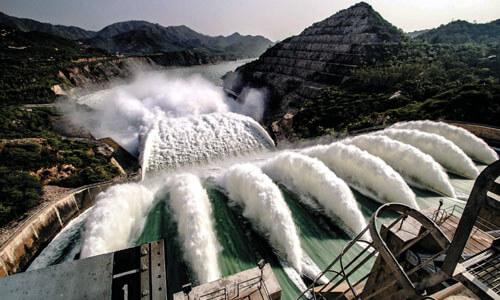
- Rawal Dam located in Islamabad
- Diamer Bhasha Dam located in Gilgit Baltistan
- Mangla Dam located in Mirpur District
- Neelum Jhelum Dam in Muzaffarabad district
- Mirani Dam located in Kech District Balochistan
- Tarbela Dam located in Haripur
- Khanpur Dam located in Haripur
- Sabakzai Dam in Zhob, Balochistan
- Hub Dam located in Malir
- Satpara Dam located in Skardu
- Warsak Dam located in the Kabul River
- Gomal Zam Dam located in Kajori Kach South Waziristan agency KPK.
- Namal Dam in Namal Valley in Mianwali
According to International Commission on Large Dams, the following information is provided about dams that is,
- The largest fill type dam in the world is Tarbela dam and in respect to structural volume, it is the second largest dam in the world.
- Mirani dam is famous as it the world’s largest dam in regard of volume that is best for protection of flood because it has a floodstock of 588,690 cubic hectometers.
- Concerning volume for flood stock, Sabakzai Dam is the 7th largest dam which has a floodstock of 23,638 cubic hectometers.
Why does Pakistan Need Dams?
Pakistan is an agricultural country. To increase the agricultural yield, Pakistan needs water storage reservoirs. However, the irrigation system of Pakistan is the world’s largest irrigation source but still, there is a need to strengthen the irrigation system.
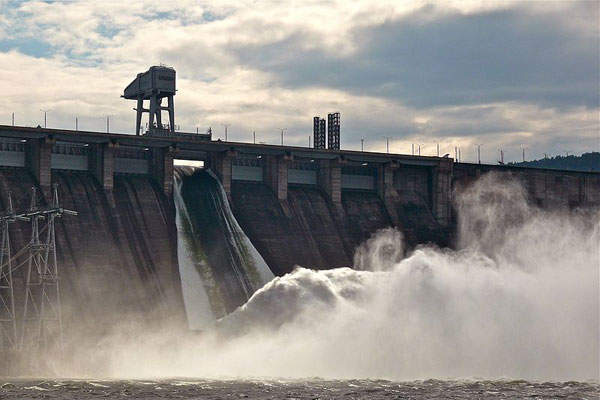
In the current age, the whole Earth is suffering from climate change hazards. The environment of Pakistan is also effecting by global warming that in result put a worse impact on the growth of farmed products. Thus, to protect agriculture from climate change, there is a big need to construct further dams in Pakistan.
Pakistan has more glacial ice than any other country outside polar regions. But its melt rate is doubling from climate change, threatening local communities & 50% of 🇵🇰 water supply. #UKAid is helping; #YOCA @COP26 #HCsGoNorth #UKPakDosti pic.twitter.com/b1JOImHJpS
— Christian Turner (@CTurnerFCDO) October 6, 2020
Furthermore, the construction of dams is also useful in controlling floods and irregular flow of water that usually happens when the snow melts from the mountains. The alarming condition of rapidly changing Earth’s climate and the ways to overcome them have addressed by the prime minister of Pakistan Mr. Imran Khan in 2019 at the United Nations meeting.
Rawal Dam
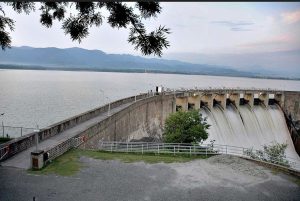
Rawal Dam is the first water reservoir that has been supplying water since 1962 to the Rawalpindi and Islamabad Housing Societies. Water in this dam comes from the Korang River and many other small water streams going down the Margala Hills. Rawal dam and Rawal lake along with the Margala hills are awe-inspiring and are favorite spots for tourists as there is a beautiful park that surrounds the lake having lush green areas and picnic points.
Diamer Bhasha Dam
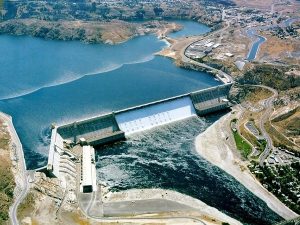
Currently, Pakistan is constructing the Diamer Bhasha Dam on the Indus River. It is located in KPK in the Kohistan District but also a small fraction of it is located in Diamer in Gilgit Baltistan. According to a safe estimation, it will take 9 years to complete the project.
The new dam project is partially funded by the United States. The total cost of the Diamer Bhasha Dam can range from $18 to $20 billion. In the opinion of experts, this dam will play an excellent role to improve the economy of Pakistan as CPEC. This will also increase the storage capacity of Tarbela Dam by 35 years.
Generating electricity
This dam will generate 4800 megawatts of electricity with its 12 turbines. When this dam would be completed, it would generate 4500 MW of hydel power. It is planned to construct two underground powerhouses that would be installed as a part of this dam and these power plants would generate electricity in a way that each plant would have sox turbines having a capacity of 4500MV.
Storage Capacity
The experts predict that after the construction will complete, Diamer Bhasha Dam will be the highest dam in the world with an area of 110 square kilometers and a water storage capacity of around 8MAF. The maximum height of the dam will be 270 meters. Also, this dam would have fourteen gates.
Furthermore, this dam would have such a large volume to store 8,500,000 acre-feet of water. In this way, this dam is going to be very useful as it will not only store water for drinking purposes and for livestock but also for agriculture and power generating purposes.
Mangla Dam

Mangla Dam is a large dam in Pakistan that is located in Mirpur District in Azad Kashmir. Its construction started in 1961 and it was completed in 1967. A lake is formed due to this dam known as Mangla Lake which is about four-hour drive from Lahore and two-hour drive from Islamabad.
Water Storage Capacity and Electricity Generation
Mangla Dam is a very famous dam in Pakistan as it is the second-largest water reservoir in Pakistan as it has a height of 147 meters and a length of 3140 meters. This dam was mainly formed for the storage of water for irrigation purposes and for livestock.
This dam has also become a source of hydal power generation as it generates about 1150 megawatts of electricity. There are future plans to increase its capacity up to 1500 megawatts.
Neelum-Jhelum Dam

It is one of the famous dams in Pakistan that is constructed recently by a Chinese Corporation. This was built mainly to divert the flow of water from the Neelum River toward the Jhelum river.
In the construction of this dam, initial stages have started. In 2007, a contract to build this dam was given to a Chinese Business and so its construction started in 2008. It is one of the smallest dams in Pakistan but guarantees a bright future.
Electricity Generation
In April 2018, the first generator for producing hydropower electricity was built under this project in the area of Azad Jammu and Kashmir which is about 26 miles from Muzaffarabad. It has a capacity of generating 969 MV electricity.
Mirani Dam
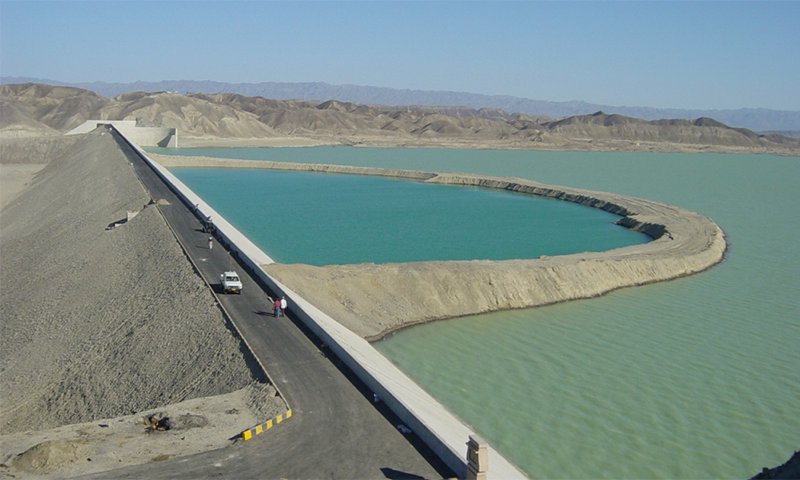
Mirani dam is located in the Kech District in the province of Balochistan. It is situated in the south of Makran Range and was constructed on the Dasht River. Its construction was completed in 2006 and its building contract was given to Pakistan’s Water and Power Development Authority (WAPDA).
Crop Production and Agriculture
The main objective of building this dam was crop production and agriculture. It is so as Kech Valley has fertile land and it is cultivable. If a continuous supply of water is provided, this land can be used for crop production and agriculture purposes.
Water Storage Capacity
It has a capacity to store 373,000,000 m3 volume of water. This dam receives water from the rivers of Nihing and Kech. It provides the best water storage reservoir in summer when the snow melts and also during the flood seasons.
It is planned that from the stored water of the Mirani dam, water should be supplied to the Mirani and Turbat cities to meet the efficiency of water there.
Tarbela Dam

Tarbela Dam has significance and importance as it is the largest fill type dam in the whole world. It is the most famous dam in Pakistan. It is located in Khyber Pakhtunkhwa in its two districts: Haripur and Swabi. This dam as built on Pakistan’s largest river; the Indus River to prevent or restrict the water flow. Due to this dam, water has taken a form of a reservoir which is also known as Tarbela Lake. The building contract of this dam started in the 1960s and its construction took place in three steps and was completed in 1976.
Electricity Generation
Tarbela Dam is the origin from which Pakistan first started the generation of Hydroelectricity. One important thing about this dam is that it is the focal point or central point of many major districts and cities. As, it is almost at the distance of 30km from Swabi, 105 km from the capital city Islamabad, and 125 km from Peshawar city.
This dam was constructed about 470ft. from the river bed and the border of this dam covers the area of 9000 ft. This dam has the capacity to generate 5000 megawatts of electricity. It is planned to increase the power generating capacity of this dam to 6000megawatts by extensions. It would be another distinctive thing about Tarbela Dam.
Khanpur Dam

Khanpur dam is constructed on the River Haro to preserve water outflowing from this river. This dam was constructed in 1983. Water stored in the Khanpur dam has generated a reservoir or lake that is known as Khanpur lake. This lake has very much importance as it is a source of providing drinkable water to its nearby large cities, Islamabad and Rawalpindi.
Adventurous Water Sports
This dam along with its lake provides an enchanting place that is filled with eye-catching beauty. The most important thing about this dam that adds to its attraction and forces the tourists to visit is the adventurous and different water sports that it offers. there is parasailing that is a very risky and adventurous sport but attracts the people to experience this incredible game. It also offers a wide range of other water sports that are kayaking, cliff jumping, swimming, and boating.
Sabakzai Dam

Sabakzai Dam is the 7th largest dam concerning volume for flood stock and has a flood stock of 23,638 cubic hectometers. This dam was built by the president Parvez Musharraf and its inauguration took place on 3rd September 2007.
It is basically an embankment dam. Embankment dam is also known as earth-fill dam. It is actually a large man-made or artificial dam that is made up of consecutive layers of earth in which most impervious materials are used. They are formed in a complex order and reduction phenomenon in which pieces of rock and soil are piled up.
In the southwest part of Balochistan, there is a stream of Zhob river that is derived from the Sabakzai River.
Water Storage and Irrigation
This dam is filled with soil and rock to the length of approximately 395m but it has a 7300-acre base area. It stores a large amount of water and has a large volume of flood stock. From the stored water of this dam, irrigation takes place of the surrounding agricultural land. This has made this area full of greenery that invites the tourist to visit and see its awe-inspiring beauty.
Hub Dam
This is one of the famous dams in Pakistan that is located in the district of Lasbela in Sindh province. It is about 58 k from the city of Karachi.
Water Storage
This dam is famous as it is the third-largest dam in Pakistan. It is spread over a large area of 24,300 acres. This dam supplies the best storage body for water as it has a length of 857000-acre feet. It is very essential and it is the mean of water supply in the Sindh region. The large city of Karachi fulfills its requirement from this dam.
Wildlife Sanctuary
In 1974, the area near the Hub dam become the habitat of wild animals and as stated by the government, in this wildlife sanctuary, there are ducks, cranes, pelicans, and other wild animals that can be found there enjoying and living in this beautiful and naturalistic environment. It is estimated that the shelter here is about 27219 hectares in total length.
Satpara Dam
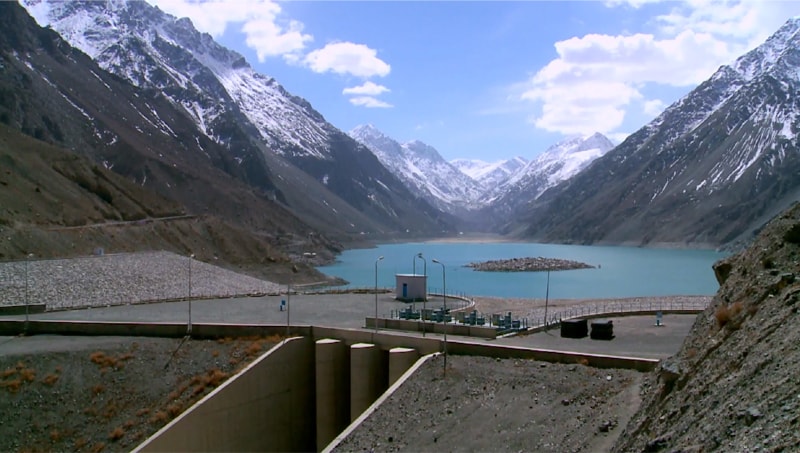
Satapara dam is situated in the province of Gilgit Baltistan in the beautiful valley of Skardu near Satpara lake. This place is among the most beautiful places in Pakistan. The length of the Satpara dam has been extended due to this dam. The best thing about this dam is that it has met the water lackage problem in Skardu Valley as it provides millions of gallons to the city of Skardu every day.
Satpara lake
Due to the Satpara dam, a lake has formed which is known as Satpara lake which is a very beautiful lake in Pakistan. It is the focal point of tourist attractions. This place is mostly visited in the summer season when there is a very cool and pleasant atmosphere while in the winter season this place is mostly covered with snow.
Water Storage
This dam has a full length of about 15,536 acres from the ground. It has a large capacity to store water. This dam has met the need for water in this region as it provides about 3.2 million gallons per day to the valley of Skardu.
Electricity Generation
To fulfill the need and requirement of electricity in this region, powerhouses were designed and they were planning to construct in 2003 and were built in 2013, Due to this, 17.36 megawatts of hydroelectricity are produced and this energy provides electricity to almost 30,000 houses in the valley of Skardu.
Warsak Dam

Warsak dam is another very famous dam in Pakistan. It is situated in the Peshawar valley is built on the Kabul River. This dam is built by the collaboration between Canada and Pakistan. Financial assistance was given by the government of Canada.
Hydroelectricity Generation
This dam can generate electricity up to 243 MW.
It is planned by the Water and Power Development Authority (WAPDA) of Pakistan to upgrade the power generating capacity of this by specific installations so that it can generate 375MW moreelectricity than before. It would make a total of 525 MW electricity.
Gomal Zam Dam
This dam is located in the South Waziristan Agency of Federal Administrated Tribal Areas. This dam is constructed on the Gomal River which is branch of Indus River. The construction of this dam was started in 2001 and completed in 2011. However, the contract for its construction was approved in 1963, but the work stopped due to war of 1965. Then in 2001, the president, General Parvaiz Musharraf started its construction again.
Water Storage Capacity and Electricity Generation
This dam is a Roller Compacted Concrete (RCC) gravity dam. This dam has the depth of 437 ft. and thus stores water in flood seasons. This dam was mainly constructed to store water to control flood, and for irrigation and power generation purposes. This dam has the capacity to generate 17.4 MW electricity.
Namal Dam
This dam was constructed in 1913. It is located in Namal Valley in Mianwali. The water reservoir formed due to namal dam is known as Namal Lake that covers the large surface area of about 5.5 sq. km. This place is very beautiful and it is also a recreational point for tourist as it is surrounded by mountains and there are lush green areas due to agriculture sites.
This dam was build to conserve water to use this water for irrigation of the agriculture lands. Now, this place has not only become a recreational spot but also migratory birds migrate to this region.